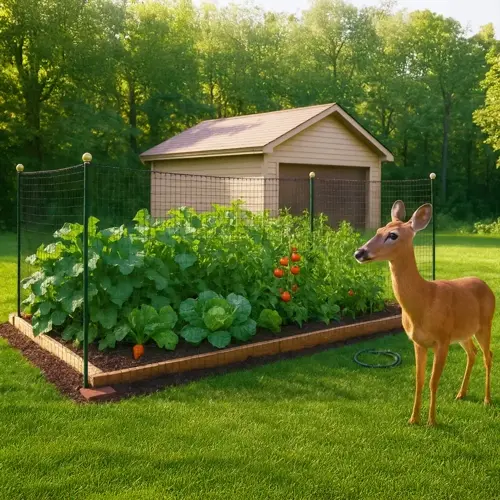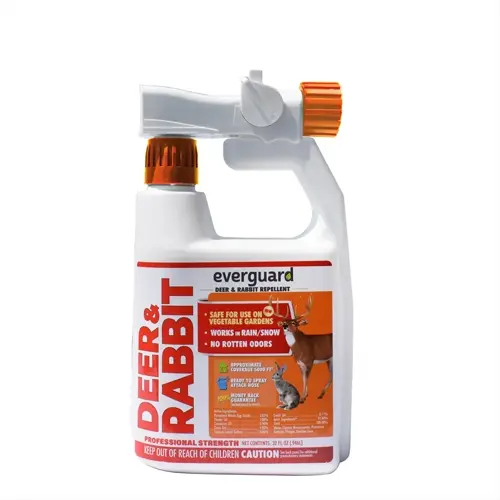10 Natural Weed Control Methods That Work

Written by
Benjamin Miller
Reviewed by
Prof. Charles Hartman, Ph.D.Natural ways to control weeds keep the ecosystem healthy and weed free.
Mulching stops light to suppress weeds and helps to build soil health over a season or two.
Hand pulling weeds after rain will remove details so that they do not return.
Boiling water will kill weeds on the surface instantly but should be poured carefully.
Vinegar solutions can work but it is crucial you have the right concentration of vinegar and protective gear.
Using more then one natural way will provide long-term sustainable weed management without chemicals.
Article Navigation
Natural weed management refers to a variety of methods of non-chemical weed control. In turn, it will protect your pets, your children, and the earth. The goal is to ensure safety in maintaining a healthy, thriving garden. These techniques do not contain any harmful toxins typically found in store-bought products.
Synthetic herbicides, such as glyphosate products, can pose serious threats to the quality of your soil and water resources and harm beneficial insects located in your garden. The use of natural products to replace these synthetic products eliminates the likelihood of this damage happening ever again. You keep a balanced ecosystem in your backyard.
We present five fundamental methods. Starting with weeds identification and concluding with vinegar solutions. You will learn practical steps, ranging from simple to more complex approaches. Each technique builds upon the previous one for the greatest effect in your garden.
Understanding Weed Types
Knowledge of your weeds makes natural weed control more effective. There are some common varieties of weeds that you will see. Dandelions have deep taproots, and crabgrass has shallow roots. In the summer, crabgrass can invade lawns very rapidly. Identifying them allows you to select the appropriate removal strategy for your garden.
Weeds with shallow roots, like chickweed or purslane, are easier to pull because their roots are closer to the surface so that you can hand-pull them. In temperate regions, crabgrass will invade lawns every year. Be sure to address these early so they do not take over your planting beds.
Thistles and bindweed are perennial weeds with a deep root system, and a sustained and persistent approach is necessary because they will regrow from any leftover root pieces. You must eliminate the entire root system. Expect to have to monitor and treat these weeds several times to achieve full control.
Weeds from a specific region require specific consideration. In wetter climates, moss may take over the shaded areas. In dryer areas, invasive spurge can be a formidable foe. Your plan of attack should vary according to the weed pressure in your region. This makes sure your efforts are in line with what actually grows in your yard.
Annual Broadleaf Weeds
- Broad leaves with net-like veins, often with showy flowers. Complete life cycle in one growing season. Spread primarily through high seed production. Examples include purslane with fleshy leaves and pigweed with tall spikes.
Annual Grassy Weeds
- Narrow leaves with parallel veins, resembling lawn grasses but growing faster. Identifiable by their hollow, rounded stems and fibrous root systems. Crabgrass forms star-shaped patterns while foxtail has bushy seed heads.
Perennial Broadleaf Weeds
- Deep taproots that regenerate from fragments. Rosette growth pattern with dandelions having distinctive yellow flowers. Plantain displays ribbed leaves in basal clusters. Bindweed develops vine-like stems that choke other plants.
Perennial Grassy Weeds
- Spreading rhizomes or stolons that form dense mats. Bermuda grass has fine blades with purple-tinged bases. Quackgrass features clasping auricles where leaves meet stems. Johnsongrass grows taller than turf with broad, veined leaves.
Invasive Weed Identification
- Recognizable by rapid spread and ecosystem disruption. Japanese knotweed has bamboo-like stems and heart-shaped leaves. Kudzu exhibits triple-leaf clusters and smothers structures. Garlic mustard releases chemicals inhibiting other plant growth.
Mulching for Weed Suppression
For effective weed control, you should apply a 3-4 inch layer of mulch, which cuts off all sunlight and prevents weed seed germination. Yes, I learned my lesson the hard way when I used a thinner layer of mulch and some persistent weeds came through. For best results, place cardboard or newspaper between the mulch and soil layers as an intermediate layer of protection against stubborn weeds.
Different materials break down at different rates. Cardboard will decompose in 3-6 months, adding nutrients back to your soil naturally. Wood chips will last 1-2 years of back mulch, requiring you to replenish the mulch less often. Either option is fine, considering your garden and the frequency of replenishing mulch.
Be mindful of soil pH when choosing mulch species. When added, pine needles acidify the soil, making it suitable for acid-loving plants like blueberries. Please don't use them around alkaline-soil-loving plants. In my Pacific Northwest garden, pine mulch has drastically increased my blueberry yields.
Save money with recycled materials. Get cardboard boxes from shipments or ask your neighbors for newspapers. I use these free items to cover my vegetable beds before adding wood chips. It doesn't cost anything and keeps weeds under control.
Cardboard/Newspaper
- Blocks 95% light when layered properly. Decomposes in 3-6 months improving soil structure. Free and readily available from household recycling. Ensure removal of plastic tapes and glossy coatings before use.
Wood Chips
- Lasts 1-2 years before replacement needed. Insulates soil against temperature extremes. Best for perennial beds and walkways. Use aged chips to avoid nitrogen depletion in topsoil layers.
Grass Clippings
- Apply thin 1-inch layers to prevent matting. Decomposes in 2-4 weeks releasing nitrogen. Avoid herbicide-treated lawn clippings. Ideal for vegetable gardens needing frequent replenishment.
Straw/Hay
- Effective for 4-6 months with proper compaction. Use weed-free straw to avoid introducing new seeds. Provides excellent moisture retention but may attract rodents if too thick.
Pine Needles
- Naturally acidic (pH 3.5-4.5) lasting 6-12 months. Perfect for acid-loving plants like azaleas. Allows water penetration while suppressing weeds. Avoid in alkaline soil gardens.

Site Preparation
- Critical: Remove existing weeds completely including all root systems before starting. Water soil thoroughly before application to ensure good moisture levels. Level uneven surfaces to create uniform coverage across the entire area. Wear durable gloves to protect hands during preparation work.
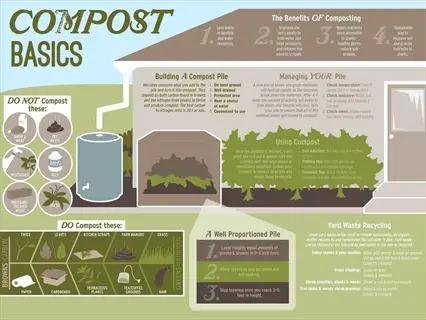
Base Layer Setup
- Overlap cardboard or newspaper sheets by 6 inches to prevent gaps where weeds could emerge. Eliminate all light penetration to underlying weeds for effective suppression. Use 2-3 newspaper layers or single cardboard layer coverage. Mist paper with water to prevent shifting during installation.
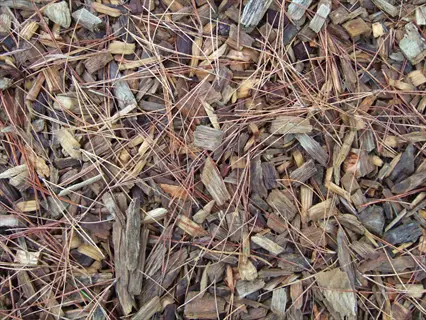
Mulch Application
- Spread material evenly at 3-4 inch depth across the prepared area. Keep mulch 2 inches from plant stems to prevent potential rot issues. Use wheelbarrow for efficient transport when working in large spaces. Taper thickness near edges for clean appearance and proper drainage.

Moisture Management
- Water slowly to penetrate through mulch layers without causing runoff. Check moisture 2 inches below surface weekly using a soil probe. Adjust watering frequency based on mulch type and weather conditions. Add drip irrigation under mulch for efficient water delivery to roots.
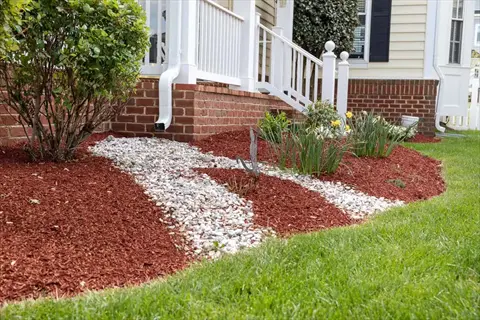
Maintenance
- Replenish thinning areas every 3-6 months to maintain coverage. Remove any emerging weeds immediately before they establish roots. Fluff compacted mulch with garden fork to improve air circulation. Replace decomposed material completely after 1-2 years for continued effectiveness.
Hand Pulling Weeds Effectively
Weed early in the morning, after rain, when the soil is moist. This allows roots to release more easily without breaking. I learned this from years of maintaining my perennial beds. The best soil moisture will enable you to take full root systems intact.
Make sure to remove entire roots, particularly for perennial weeds (dandelion). If you break the taproot, it will regrow almost instantly, thus undermining your work. Use a weeding tool to loosen soil around the deep roots first so that you do not leave pieces behind that will regrow.
Different types of weeds require different tools. Angled blades can attack weeds with tap roots (i.e., thistles), while Straight blades can work on fibrous roots (i.e., crabgrass). It is best to keep both tools on hand, as all gardens will have a combination of weed types that benefit from both.
Take care of your back by maintaining good posture. Kneel on a pad instead of bending over. Keep your spine straight while pulling. I use a rolling garden stool that protects my knees when I weed for long periods. This prevents strain and allows you to work longer.
Annual Weeds Technique
- Grasp at soil level with firm grip. Pull steadily upward without jerking. Shake soil from roots before disposal. Ideal when soil is moist after rainfall for complete removal.
Perennial Weeds Method
- Insert tool at 45° angle near root crown. Loosen soil around taproot before lifting. Twist gently to release soil grip. Ensure entire root system is extracted to prevent regrowth.
Creeping Weeds Removal
- Trace runners to main plant source. Use garden fork to lift interconnected roots. Remove all rhizome fragments from soil. Bag immediately to prevent accidental propagation.
Post-Pulling Care
- Fill holes with fresh soil to prevent erosion. Water area lightly to settle disturbed soil. Apply corn gluten meal to inhibit new germination. Monitor site weekly for emerging seedlings.
Problematic Weeds Solution
- For thorny weeds: Use tongs with long handles. Poisonous plants: Wear full arm protection. Near desirable plants: Work from outside inward. Compact soil: Pre-soak area overnight.
Boiling Water Technique
Utilize water at a rolling boil (212°F/100°C) when targeting weed control. Lower temperature applications won't penetrate deep enough to kill roots. I have an old kettle specifically for this application, located near my shed. Pour as soon as it boils, though - it quickly loses effectiveness once it cools down.
When working with boiling water, wearing safety gear is essential. Use heat-resistant gloves and shoes that cover your entire foot. Pour slowly from a stable container to minimize the potential for harmful splashes. I also like to grip the kettle handle with both hands for better control, particularly on an uneven surface.
This is most effective against annual weeds with shallow roots like chickweed. Perennial weeds with deeper roots will usually survive, even when hit repeatedly. I see obvious wilting within a couple of hours with the annuals, simply bindweed laughs it off and regrows.
Constrain the boiling water to smaller spots away from desirable plants. Never use this in flower beds or lawns, because it will also kill everything there. The boiling water can be used in pavement cracks or gravel paths. I mostly use it in my driveway, where I have weeds, because nothing is growing there.
Optimal Conditions
- Apply during sunny days when weeds are actively growing. Target young weeds less than 4 inches tall. Soil should be dry to prevent rapid cooling. Air temperature above 70°F (21°C) enhances effectiveness.
Safety Protocol
- Wear closed-toe shoes and long pants for protection. Use heat-resistant gloves when carrying boiling water. Pour slowly from stable container to avoid splashing. Keep children and pets away during application.
Execution Method
- Pour directly onto weed centers within 3 seconds of removal from heat. Use kettle with narrow spout for precision. Cover 3-inch diameter per cup of water. Repeat applications every 48 hours for stubborn weeds.
Problem Areas
- Most effective on driveways, sidewalks and stone paths. Avoid use within 12 inches of desirable plants. Not recommended for lawns as it kills grass. Ineffective on woody-stemmed mature weeds.
Efficiency Tips
- Use leftover water from cooking pasta or vegetables. Work in small 3x3 foot sections systematically. Combine with manual removal of dead weeds after 24 hours. Apply vinegar solution to roots for enhanced results.
Vinegar Weed Killer Solutions
Use the correct acetic acid concentration to obtain accurate results. Household vinegar has 5% strength suitable for young weeds. Horticultural vinegar contains 20% acetic acid and is effective in killing tougher perennial weeds. I always read labels since stronger concentrations have a quicker effect on established invaders.
Before using vinegar solutions, make sure to protect yourself with required personal protective equipment. Always use chemical-resistant gloves and safety goggles with a full eye shield. Pour vinegar solutions in a well-ventilated area to avoid inhaling strong vapors. I learned this from eye irritation resulting from splashes on my face.
Prevent environmental impacts by reducing runoff to waterways. The product should be handled carefully, keeping it away from storm drains and water bodies. Rainfall within 6 hours can wash vinegar into ecosystems, harming aquatic organisms. I set up containment/retention berms to manage any spills in treatment areas.
Only apply on sunny days with no rain forecast. Full sunlight is most effective in activating the vinegar's weed-burning effect. I even check my weather apps obsessively before mixing solutions. I apply the treatment in the morning to allow it to work all day before the dew settles overnight.
Standard Recipe
- Combine 1 gallon white vinegar (5% acetic acid) with ½ cup castile soap and ½ cup lemon juice. The soap helps the solution stick to leaves while lemon juice boosts acidity. Mix in plastic container to avoid corrosion.
Enhanced Strength Formula
- For tough weeds: Use 1 gallon 20% horticultural vinegar + 1 cup salt + 2 tablespoons dish soap. Salt increases effectiveness but damages soil - use only on pavements. Rinse spills immediately from skin.
Application Technique
- Spray leaves thoroughly until dripping using pump sprayer. Cover entire weed surface without soaking soil. Apply during midday heat for fastest action. Avoid windy days to prevent drift onto desirable plants.
Safety Measures
- Wear goggles, gloves, and long sleeves during mixing and application. Work in well-ventilated areas due to strong fumes. Store out of children's reach in labeled containers. Neutralize spills with baking soda.
Effectiveness Timeline
- Visible wilting within 4 hours. Complete leaf death in 24-48 hours. Reapply after rain or every 2 weeks for persistent weeds. Combine with manual root removal for perennial species.
5 Common Myths
It is widely thought that vinegar is a one-use, permanent weed killer for leafy weeds.
Vinegar works very well at destroying leaf type foliage, but typically does not kill deep root systems, especially for tough perennial weeds. If you want to see any real impact, you'll need to use repeated applications every 2-3 weeks while the weeds are actively growing. To get a more permanent result, vinegar applications should be used in combination with techniques that physically remove the root, or that smother the root from generating any new growth from a remaining underground root system. The combined approach of vinegar with either of these processes mitigates regrowth by addressing both the leaves and the underground regeneration mechanism.
Gardeners often mistakenly consider salt an environmentally safe solution for controlling weeds in planting beds.
Salt causes severe, long-term soil degradation by destroying essential microbial ecosystems and creating sterile conditions where no plants can thrive. Sodium accumulation fundamentally alters soil chemistry, preventing proper water absorption by plant roots and persisting for multiple growing seasons. This mineral contamination requires extensive remediation efforts. Reserve salt-based solutions exclusively for permanent hardscapes like driveways and never apply them near planting areas where ecological damage would be irreversible and detrimental to future cultivation.
A widespread misconception claims boiling water effectively eliminates all weed varieties in any garden location.
While boiling water works effectively on young annual weeds growing in pavement cracks, it fails completely against deep-rooted perennials like dandelions or thistles with extensive root networks. The treatment indiscriminately kills beneficial soil organisms critical for nutrient cycling and severely damages nearby desirable plants when applied carelessly near garden beds. Additionally, its effectiveness diminishes rapidly on sloped surfaces where runoff occurs, making it impractical for most garden applications beyond isolated spot treatments in non-vegetated areas.
Homeowners frequently assume natural weed control methods are instantly safe for pets after application.
Vinegar and citrus-based solutions retain chemical potency that can cause significant skin irritation or digestive distress if pets contact treated surfaces before complete drying occurs. Always isolate pets from treated areas for at least 24 hours post-application and thoroughly rinse residues with clean water before allowing animal access. This precaution period ensures volatile compounds dissipate completely, preventing accidental ingestion during grooming or direct contact that could lead to veterinary emergencies requiring professional medical intervention.
There is a long-standing gardening myth that weeds only grow well when soil is lacking in nutrients in an cultivated area.
There are many aggressive weeds such as chickweed, purslane, and lamb's quarters that are actually growing very well in rich, fertile soil with lots of nitrogen. These opportunistic types thrive also under other favorable growing conditions besides soil poverty or deficiency. Weeds will also readily compete in the boundary conditions of compacted soil (limits competition for oxygen and water), pockets of overly wet areas, and degraded soil with bare patches where they will easily dominate over desirable plants. When gardeners understand that weeds are opportunistic colonizers across a wide range of growing environments, they can devise holistic approaches to prevention rather than only imposition of amendments to soil which could overlook other important contributory factors.
Conclusion
Organic weed control takes labor, but it protects your garden's ecosystem. These methods prevent the use of products that harm beneficial insects or soil organisms. Each weed eliminated through organic means fosters a healthier environment. Although it takes a little more time, the benefit of enduring safety in your garden is worth it.
For the best outcome, use mulching with vinegar spot treatments in combination. When you want to cover a large area, start with the organic mulch, then spray vinegar on the few survivors you can find. I manage my whole garden in this way. A bit of constant monitoring means I get to them early and don't have to do much back-breaking work later in the season.
Prevention still beats curing all the time. Take a walk through your garden every week to inspect for new growth. Pull any seedling before it takes hold and goes deeper in the ground. This habit really minimizes your wedding time. I spend 10 minutes per day to keep things manageable throughout the garden season.
You have total control with chemical-free solutions. You can select methods that apply to your specific weeds and situations. This allows you to create the garden you want safely and securely. You are genuinely making a difference for your family and local ecosystem.
External Sources
Frequently Asked Questions
Does vinegar effectively kill weeds permanently?
Vinegar kills weed foliage quickly but rarely destroys deep roots permanently. It works best on young annual weeds and requires repeated applications. For lasting results, combine with manual root removal or mulching to prevent regrowth.
What naturally kills weeds without harming grass?
Spot-applied boiling water or high-concentration vinegar solutions target weeds while minimizing grass damage. Always apply precisely during dry conditions. Maintain healthy turf through proper mowing and watering to naturally suppress weed growth.
How can I stop weeds in gravel permanently?
Effective methods include:
- Pouring boiling water directly on weeds
- Applying salt-vinegar solutions (use cautiously)
- Installing quality landscape fabric under gravel
- Replenishing gravel layers annually to block light
Is vinegar safer than chemical weed killers?
Vinegar poses fewer environmental risks than synthetic herbicides but requires careful handling. It lacks residual soil contamination but can harm nearby plants and beneficial insects if misapplied. Always use protective gear and targeted application.
What's better for weeds: pulling or spraying?
Pulling removes entire root systems for lasting results but is labor-intensive. Spraying works faster for large areas but may require follow-up. Combine both: spray first, then remove dead roots manually for optimal control.
How do I prevent weeds from returning?
Key prevention strategies:
- Apply 3-4 inches of organic mulch annually
- Maintain soil health to favor desired plants
- Remove weeds before seed formation
- Use landscape fabric in high-pressure areas
- Inspect garden weekly for early intervention
Does rain affect vinegar weed treatments?
Rain within 6-8 hours of application significantly reduces vinegar effectiveness. Always treat during predicted dry spells. Reapply after rainfall if weeds show signs of recovery for consistent results.
What kills weeds fastest naturally?
Boiling water causes immediate wilting, while horticultural vinegar (20% concentration) shows visible damage within 2 hours. Both work fastest on sunny days when plants are actively growing and stressed.
Can salt solutions damage my garden soil?
Yes, salt creates long-term soil sterility by destroying microbial life and causing sodium buildup. Reserve salt mixtures exclusively for non-plant areas like driveways. Never use near garden beds or lawns.
How often should I reapply natural weed killers?
Reapplication frequency depends on:
- Weed type: Annuals need 1-2 treatments, perennials 3-5
- Season: Apply every 2 weeks during peak growth
- Method: Vinegar requires more repeats than boiling water
- Weather: Re-treat after heavy rain immediately
